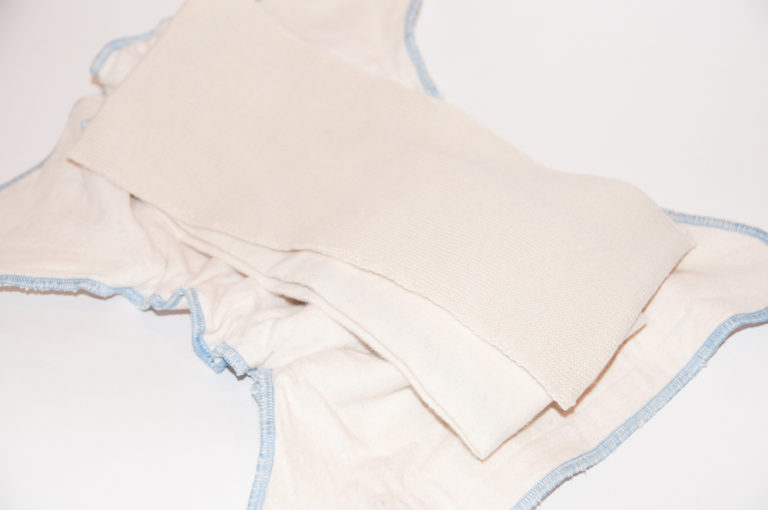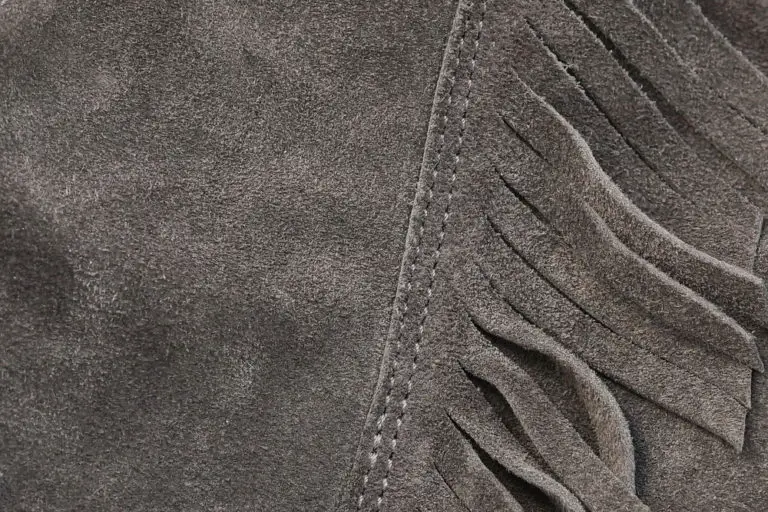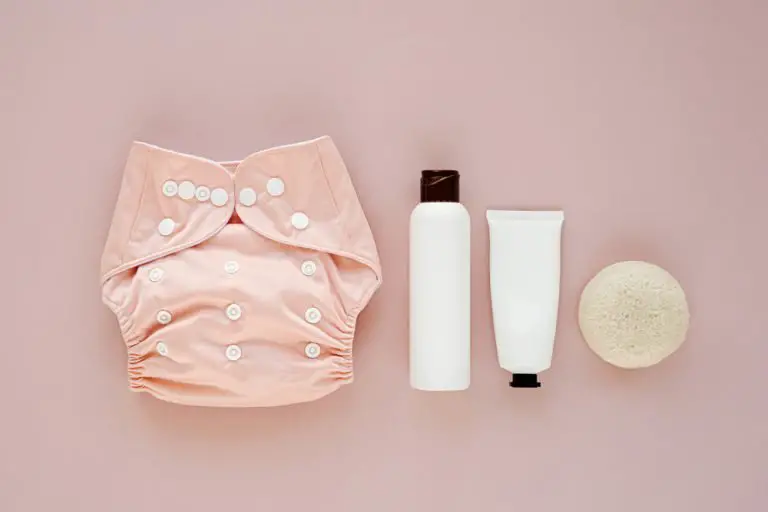Cloth Diapers vs. Disposable Diapers: The Definitive Guide (2024)
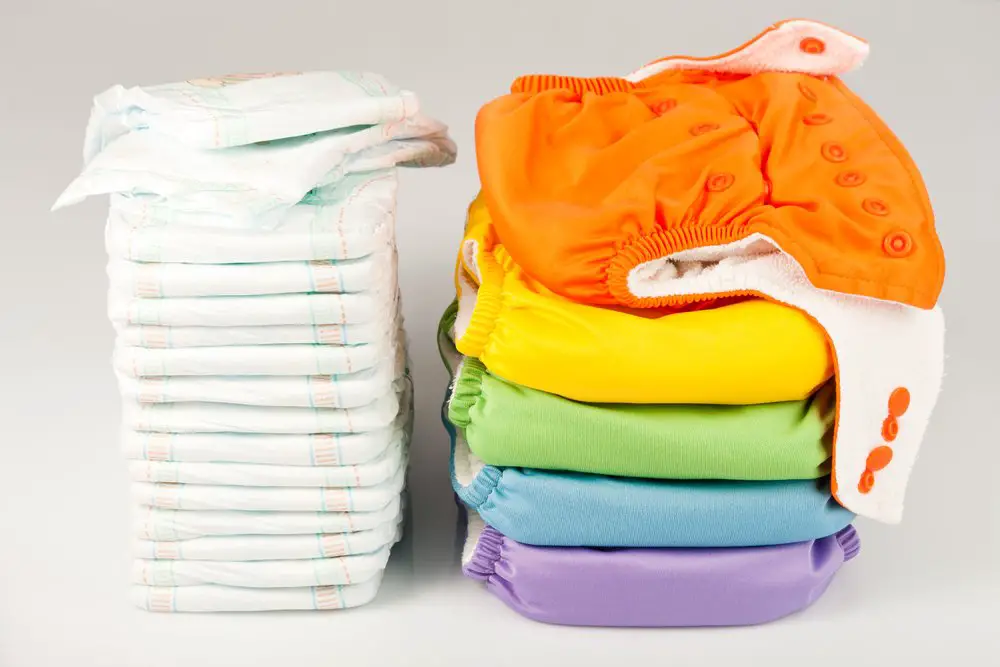
There is a lot of discussions when it comes to cloth diapers vs. disposable diapers. The truth is, though, that cloth diapers are not for everyone. This article will explore the pros and cons of both styles.
- Cost
- Materials and Ingredients
- Absorbency
- Baby Comfort
- Design Options
- Ease of Use
- Environmental Impact
- Travel and Daycare
- Needed Accessories
Cloth Diapers vs. Disposable Diapers
There is no doubt of the environmental impact of disposable diapers. Every single disposable diaper ever made is still on the planet. Each disposable diaper takes 500 years to break down!
Use the chart below to learn about cloth vs. disposable diapers.
| Disposable diapers | Cloth diapers | |
| Cost | ||
| One diaper price | $0.25 per diaper | $10-$15 |
| Cost per month | $180 per month | $176 (cloth diaper service)$45 (Electric, Water & Detergent) |
| Materials and ingredients | ||
| Common materials | Polypropylene, Polyethylene, Elastics, Adhesives | Cotton, Hemp, Bamboo, Wool |
| Absorbency | ||
| Absorbent layer | Absorbent polymer | Cotton, Hemp, Bamboo, Wool, Microfibre |
| Effectiveness | Extremely absorbent thanks to the super absorbent polymer | Varies on material |
| Baby comfort | ||
| Fit | Snug, adjustable | Varies |
| Leaking | Rare | Varies |
| Design | ||
| Design options | Not many designs available | Dozens of designs, shapes and cloth types |
| Ease of use | ||
| Changing | Easy and quick | Takes more time to change. Requires some skill |
| Time investment | Trips to the store or online delivery service | Wash every other day. |
| Extra effort | Keeping diapers in stock, additional products like diaper liners, diaper creams | Precleaning, smell treatment. |
| Environmental impact | ||
| Time to fully decompose | 500 years | 50 years |
| Manufacturing, energy, water | Considerably less water and energy to produce. | High energy fingerprint thanks to water usage and cotton production. |
| Travel | Easy to use when on the go | Some styles are easier than others |
| Daycare | Childcare centers are willing and used to using them | Doable but requires planning, not all childcare centers will accept them |
| Needed accessories | Diaper cream, wipes, diaper pail, pail liners | Wipes, laundry pail and liner, water sprayer |
| Best for | Busy parents, parents utilizing childcare centers | Parents with nannies, in home childcare |
Cost
The difference in cloth diapers vs. disposable diaper cost varies on the type of diapers you use.
Disposable Diapers
Disposable diapers range in price on average from $0.14 to $.035 per diaper.
The average number of diapers a baby uses in the first year of their life is 2,500 – 3,500, with an average cost of $.025 per diaper totals $625-$875 for just one year.
And that is before you add in any additional costs. Multiply that cost by the 3.5-years on average it takes to potty train a child, and you are looking at a lifetime cost easily over $3,000.
You can always find great deals on monthly diaper subscriptions and the added bonus is that they are usually delivered to your door. So you don’t need to run to local Target on Sunday evening if you run out.
One of the cons of disposable diapers is that you can’t resell them, so all of that is literally money in the trash can.
Cloth Diapers
A standard cloth diaper set is 15-20 diapers. The cost varies by style, but the most expensive, all-in-ones, average $15 per diaper.
Assuming you start with twenty diapers – that’s only $300! That’s already half the cost of a year of disposables.
If you go with one of the less expensive versions of reusable diapers, the cost difference is more significant. A 10 pack of pre-folds is around $20.
Two sets of pre-folds and eight covers for about $15 each, you are looking at a total as low as $160 to start. As you can see, the cost of cloth diapers is much cheaper.
Takeaway
If cost is an issue in your decision of cloth or disposable diapers, it is easy to see the long term pros of cloth diapers. Even with needing to purchase some replacements, cloth still comes out cheaper.
Materials and Ingredients
For some people debating between cloth or disposable diapers, the materials are a major factor.
Cloth diapers are biodegradable diapers, and while it can take up to 50 years for the materials to break down, that’s much quicker than the 500 for disposables.
Cloth diapers are also made of natural materials, which are better for your baby’s bottom.
Disposable Diapers
Disposable diapers are made of a polypropylene top sheet, polyethylene backsheet, and an SAP/cellulose absorbent core.
Disposable diapers use some natural fibers such as cotton and materials sourced from trees; however, the absorbent layer is made of a water-absorbing polymer.
While this polymer has proven to be safe to use, it is definitely not natural. It is also highly absorbent, which is why disposables can hold so much liquid.
Absorbency is one of the pros of disposable diapers. The downside to all that absorbency may mean less diaper changes and therefore more diaper rash with disposable diapers.
Cloth Diapers
The materials used to make cloth diapers are most commonly cotton, wool, hemp, and bamboo. All of these materials are naturally absorbent, some more than others.
Because they are natural, they are believed to be gentler on your baby’s bottom.
Due to the natural moisture-wicking in these materials, diaper rash with cloth diapers is less common than with disposables.
There are some cloth diapers and inserts that are made with a microfiber or combination of materials as well.
Takeaway
Cloth diapers are more natural and therefore gentler on your baby’s bottom, but for busy parents who are on the go and may change diapers less, disposables can be beneficial.
Absorbency
How absorbent your baby’s diaper is matters. No one wants leaks all the time because that only means more laundry!
When it comes to cloth v disposable diapers, disposables will always come out on top with absorbency. But there are some types of cloth which are more absorbent than others.
Disposable Diapers
One of the advantages of disposable diapers is how absorbent they are.
The synthetic polymer material used was specifically designed to hold a lot of moisture. Sodium polyacrylate, the moisture-absorbing polymer, can hold 200 to 300 times its weight in water!
Having a diaper this absorbable is excellent for long car trips, overnight, and busy parents who may not be able to change a diaper every one to two hours like is recommended for cloth diapers.
Cloth Diapers
If using cloth diapers, take a look at the different materials before you commit.
Microfiber inserts will be your most absorbable, but they cannot go directly against your baby’s skin. You will need to pair a microfiber insert with a natural one like hemp or bamboo.
Hemp is the most absorbable natural fiber, followed by bamboo.
Most parents double up liners, especially at night, to make sure there are no leaks and that their baby is comfortable. I used pocket diapers, so I used to double up microfiber inserts at night.
Takeaway
If done correctly, cloth diapers can be very absorbent and virtually leak free. And honestly, even the best disposable diaper leaks at times, so there is no sure proof way to prevent them. Even if you are doubling up on inserts, cloth diapers are still lower than the cost of disposable diapers.
Baby Comfort
Every parent wants their baby to feel comfortable. Part of a baby’s comfort comes not only from the absorbency level of their diaper but also from the fit.
In general, when it comes to disposable vs cloth diapers, disposables are easier to adjust. However, many styles of cloth diapers are easier now to adjust than in the past.
Disposable Diapers
Disposable diapers are soft and easy to adjust. They’re designed this way on purpose to make life simple for parents and babies.
The velcro-style tabs of disposables make it easy to open and close as needed to get the perfect fit.
Because disposables are uber absorbent, your baby often won’t feel wet right away, which is another of the pros of disposable diapers.
The downside is if they become too wet, they will sag, giving your baby some added weight when trying to move around.
Cloth Diapers
Cloth diapers are also soft and cozy, and with a variety of fabrics to choose from, you can pick the one that is the most comfortable for your baby.
One of the cons of cloth diapers is that depending on the style of cloth diapers you choose, getting the perfect fit can be challenging.
But once you get the hang of how to adjust and fastener your baby’s diaper, a cozy and snug fit shouldn’t be an issue.
Takeaway
Disposable diapers lend themselves to be comfy and cozy, but there is no reason you can’t achieve the perfect fit with cloth too. Not to mention cloth diaper rash is rare, so that’s another plus for comfort and cloth diapers!
Design Options
Both cloth diapers and washable diapers have come a long way in design since their advent. Many disposable diapers have cute patterns and designs, especially if you go with one of the designer brands.
Cloth diapers however win when it comes to cute designs! With so many brands the fabric patterns and designs seem endless.
Disposable Diapers
Each brand of disposable diapers has its own styles and patterns. Some brands even license agreements with popular characters that kids love. But honestly, when they are infants, the designs are really for the parents!
When it comes to shape and materials, disposable diapers are all the same shape. The one upside to disposable diapers is that they are very flat and easy to pack, making them a great option for parents on the go.
Cloth Diapers
Cloth diapers come in a variety of colors and patterns. If you love a nautical theme, you find diapers with whales and waves; if you love bright colors, you can find neons!
Non-disposable diapers also come in a wide range of styles.
There are all in ones which basically fit like a disposable diaper, and there are prefolds which are rectangular padded pieces that you will need to pin in place.
Takeaway
Cloth diapers provide many more options in design when it comes to fabrics and patterns than disposable diapers. Some babies are even allergic to disposable diapers, so the fact that cloth diapers provide so many choices is a major plus.
Ease of Use
When comparing cloth diapers vs regular diapers most parents would probably say that disposables are easier.
Disposables typically have fewer steps involved and of course, you don’t have to wash them.
That being said, there are several types of washable diapers that are quite simplistic to use! It will really depend on your needs as to which to prefer.
Disposable Diapers
Probably the easiest thing about disposable diapers is that once you use them, you toss them away! What could be simpler than that?
That means you don’t have to carry dirty diapers around with you when running errands. All childcare centers also accept disposable diapers, whereas cloth typically is not.
Disposable diapers are easy to adjust in size and fit, which helps prevent leaks and keeps your baby cozy and dry.
Cloth Diapers
All-in-one and pocket diapers are the easiest type of cloth diapers to use. They are the most similar to disposable. Washing these two styles is also fairly simplistic.
The more difficult cloth diapers to use are prefolds. Prefolds need to be shaped to your baby’s body and then pinned into place.
This can make this style more difficult for cloth diaper beginners or those unfamiliar with cloth. The upside is prefolds are the most economical, and they dry the fastest.
Takeaway
All in all, disposables are the easiest to use for most people. However, with a little bit of know-how and practice, any can become a cloth diaper pro!
Environmental Impact
Both cloth diapers and disposable diapers have an impact on the environment. Disposables use less water and energy since cloth diapers need to be washed regularly. Regular washing uses electricity and water.
However, cloth diapers biodegrade much faster than disposables. Infact, they decompose nearly ten times faster!
Disposable Diapers
Disposables diapers take, on average, 500 years to decompose. And, as they decompose, they also release harmful chemicals into the soil and the water.
The upside of disposable diapers and the environment is that they use less water and electricity. Once a disposable diaper is made, there is no more electricity or water involved, other than hand washing after a change.
The good news is that there are now more environmentally friendly options like biodegradable diapers available.
Cloth Diapers
Cloth diapers have a higher water and electricity footprint than disposables due to the constant washing.
However, you can reduce that footprint by air drying your diapers. An added bonus to line drying diapers is that the sun is a natural bacteria killer and stain fighter.
Allowing your cloth diapers to dry in the sunlight will naturally erase stains without the use of added detergents.
Cloth diapers also require resources to make, but the upside is that many people reuse them for a second child, gift them to a family member or friend, or re-sell them.
Takeaway
Overall, cloth diapers have less of a negative impact on the environment than disposables. They can be re-used and aren’t produced at nearly the same rate as disposables are. In the end, they use less natural resources and energy.
Travel and Daycare
If you do a lot of traveling or your child will be in daycare you may wish to consider disposables. Many childcare centers do not accept cloth diapers, despite there being no rules on the books that they cannot.
When it comes to traveling disposables mean you can toss a dirty diaper away instead of carrying it around with you until you’re able to wash!
Disposable Diapers
When debating disposable diapers’ pros and cons, one of the upsides of using them is traveling. We love to travel and took a lot of trips on airplanes when our son was in diapers.
Or those trips, we always used disposables. Unless you have access to a washing machine while you travel, cloth may not be an option since they need to be washed every 2-3 days.
Another thing to consider is that many childcare centers won’t use cloth diapers. While you can always try to change their mind, there is no guarantee they will agree.
Cloth Diapers
Cloth diapers are easy to use for day trips as long as you have a wet bag with you to store dirty diapers in until you get home. However, they are not the best option for long trips without access to a washing machine.
Even if there is a communal washing machine, do you want to spend $20 in quarters trying to wash your cloth diapers while on vacation?
Cloth diaper’s pros and cons include the fact they are not the greatest for travel nor use in childcare. If you plan to use cloth diapers, you may have better luck using them at home or family childcare rather than a large commercial one.
Takeaway
Even if you use cloth diapers regularly, you might want to consider using disposables on vacation. Likewise, you may need to opt to use cloth at home and disposables at childcare. I had to do this, and I was still glad I got to use cloth most of the time.
Needed Accessories
Each style of diaper comes with its own set of accessories. The items you need for cloth will vary depending on the style of cloth you choose.
Some need covers, inserts, liners, etc. Another thing to consider is that many of the accessories needed for cloth diapers can only be purchased online or at specialty stores.
Disposables
If using disposables, you will need a diaper pail and diaper pail liners. Many of these pails are made to reduce the smell of dirty diapers in your nursery.
You’ll want to specifically purchase a diaper pail as opposed to a regular trash can. You will also need baby wipes and will want to have diaper cream on hand.
With disposables, you can use any diaper cream that works for you and your baby’s bottom.
Cloth Diapers
You will need a laundry pail to hold dirty diapers for cloth diapers until you can wash them.
You should also purchase a diaper pail liner that you can wash with the diapers. I had two so that one could always be in the hamper and the other in the wash or drying.
You will also need a water sprayer or some tool that you can use to clean poop out of dirty diapers.
Sprayers are attached directly to your toilet and use the same water flow. Since cloth diapers should be line dried, you will need to invest in a laundry line or drying rack as well.
Cloth diapers may also require other cloth diaper accessories like liners, covers, and diaper pins.
Takeaway
Both styles of diapers have added costs included. Do your research as to which will cost you less overall and be less of a nuisance to keep in stock.

Laurel Davidson
Laurel brings her passion for parenting and years of problem-solving experiences to ParentingMode. She is the editor of ParentingMode, ensuring that the content is relevant and valuable to the readers. Laurel received her master’s degree in public administration with a certificate in economic development. She is a stay-at-home mom, raising two adorable kiddos, Aurora and Thomas. Laurel enjoys sharing her experience as a parent, traveling, and good food.

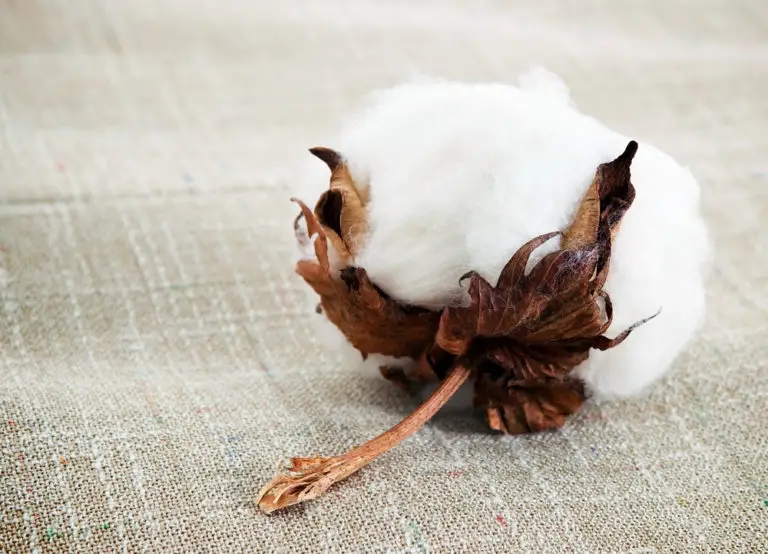
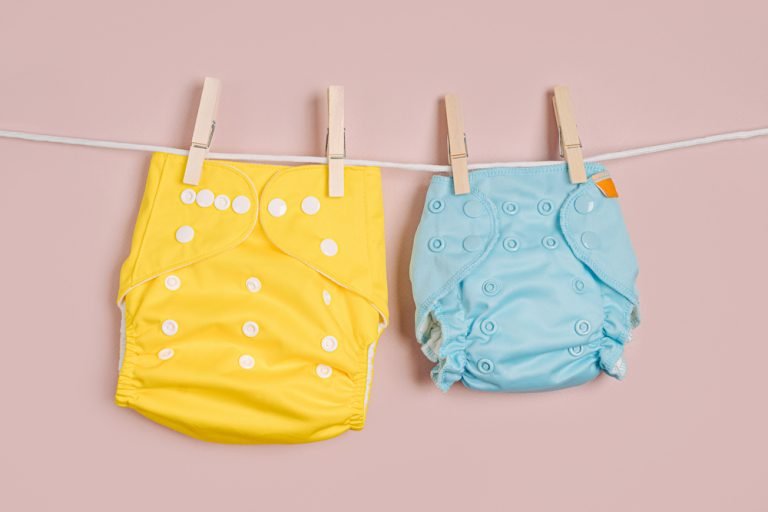
![10 Fragrance-Free Diapers in 2024 [Chemical-Free and Safe]](https://parentingmode.com/wp-content/uploads/2022/05/Depositphotos_376506414_S-768x512.jpg)
